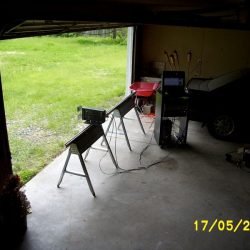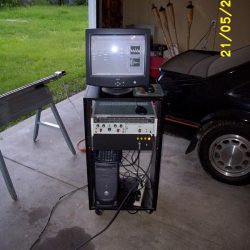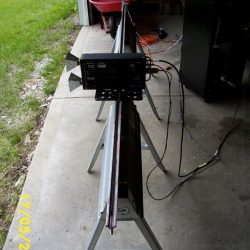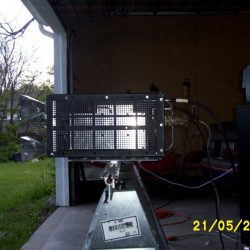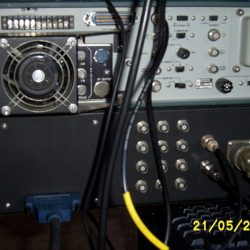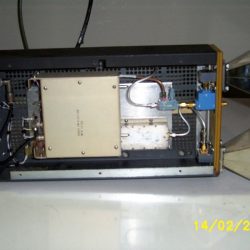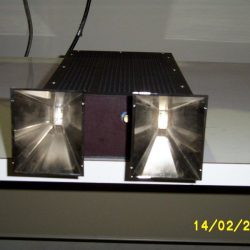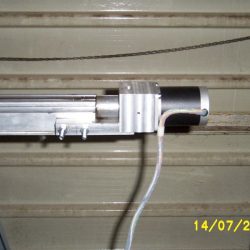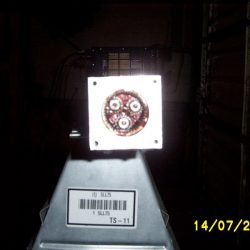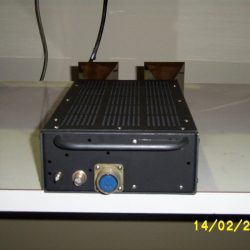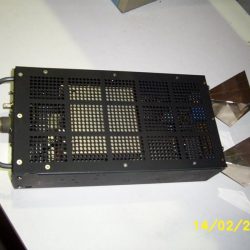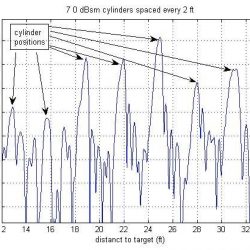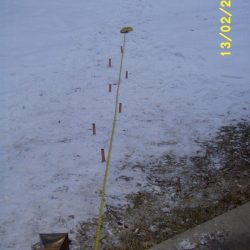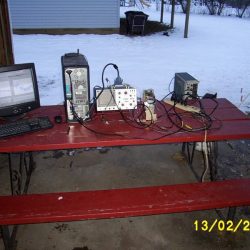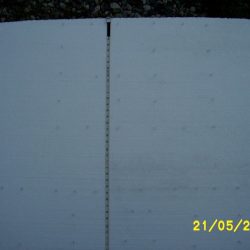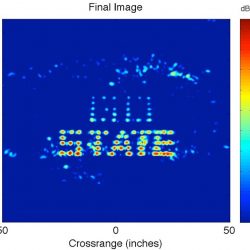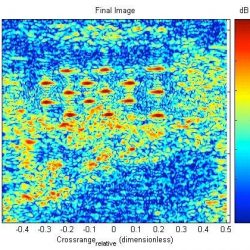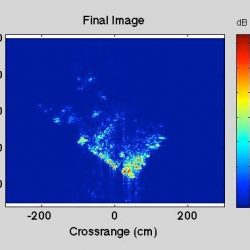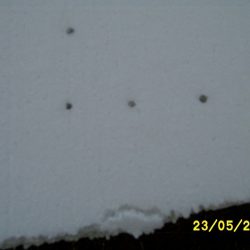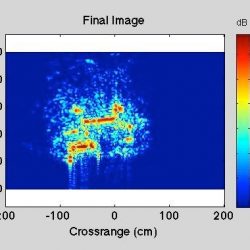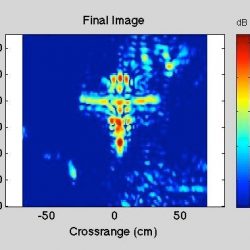X-band UWB FMCW Rail SAR
The $240 High Resolution X-Band Linear Rail SAR Imaging System
- High-resolution X-band rail SAR developed for $240
- Built in my garage and basement
- Built from surplus microwave components
- Point-to-point wiring and other construction techniques
- Utilizes a Geni garage door opener screw-drive for a linear rail
- Surplus cordless drill planetary gear set transmission coupling
- Developed as part of a SAR imaging self-study
- Capable of high resolution SAR imaging
- Model aircraft
- Pushpins (thumbtacks)
- 4.4 mm diameter spheres (BB’s)
- Bike
- Car
Abstract
Using a discarded garage door opener, an old cordless drill, and a collection of surplus microwave parts, a high resolution X-band linear rail synthetic aperture radar (SAR) imaging system was developed for approximately $240 material cost. Entry into the field of radar cross section measurements or SAR algorithm development is often difficult due to the cost of high-end precision pulsed IF or other precision radar test instruments. The low cost system that will be presented is a frequency modulated continuous wave radar utilizing a homodyne radar architecture. Transmit chirp covers 8 GHz to 12.4 GHz with 15 dBm of transmit power. Due to the fairly wide transmit bandwidth of 4.4 GHz, this radar is capable of approximately 1.4 inches of range resolution. The dynamic range of this system was measured to be 60 dB thus providing high sensitivity. The radar system traverses a 96 inch automated linear rail, acquiring range profiles at any user defined spacing.
SAR imaging algorithms developed for this system include the Polar Format Algorithm (PFA), a range stacking algorithm, and the Range Migration Algorithm (RMA). Downrange and cross range motion compensation (MOCOMP) algorithms have been developed. An autofocus algorithm has also been developed. SAR imaging results prove that this system could easily image objects as small as pushpins and 4.37 mm diameter steel spheres. This machine is the latest in a series of small radar systems developed in an effort to understand SAR imaging and apply that technology to the eventual application of through lossy dielectric imaging.
News & Blogs
- M. Szczys, ‘More continuous wave radar fun,’ November 20, 2012,
- Make Magazine Blog, ‘How-to: Build a synthetic aperture radar from $240 of junk.’
- Hack a Day, ‘X-Band linear rail SAR imaging.’
- Slashdot, ‘DIY Synthetic Aperture Radar.’
- Popular Science Blog, ‘A DIY Synthetic Aperture Radar system for $250.’
Publications
- T. S. Ralston, G. L. Charvat, S. G. Adie, B. J. Davis, S. Carney, S. A. Boppart. "Interferometric synthetic aperture microscopy, microscopic laser radar." Optics and Photonics News, June 2010, Vol. 21, No. 6, pp. 32-38.
- G. L. Charvat. “Build a high resolution synthetic aperture radar imaging system in your backyard,” MIT Haystack Observatory, May 12, 2010.
- G. L. Charvat. "Low-Cost, High Resolution X-Band Laboratory Radar System for Synthetic Aperture Radar Applications." Austin Texas: Antennas Measurement Techniques Association conference, October 2006.
- PPT slides from AMTA ’06 in Austin Texas
- G. L. Charvat, L. C. Kempel. “Low-Cost, High Resolution X-Band Laboratory Radar System for Synthetic Aperture Radar Applications.” East Lansing, MI: IEEE Electro/Information Technology Conference, May 2006.
- Draft of this Article
- PPT slides from IEEE EIT Conference at MSU, May 2006
- G. L. Charvat, “Low-cost, high-resolution, X-band laboratory radar system for synthetic aperture radar applications,” Michigan State University Chapter of the IEEE, January 31, 2007
- Seminar for Ph.D. Interview Process, Fall ’06
$240 Rail SAR Hardware Photos
Shown here are photos of the radar hardware. The front end is a direct conversion (direct conversion radar systems are sometimes called homodyne, for single conversion) FMCW radar sensor using a 7.8-12.8 GHz Yig oscillator, LNA, mixer, etc etc. The horns are low-cost MACOM commercial horns for motion sensors (I think). The linear rail is an old Genie garage door opener screw with a stepper motor coupled to it via a recycled cordless drill planetary gear set transmission. A National Instruments PCI-6014 data acquisition card triggers radar pulses and digitizes the video data. The rack shown is houses the Yig oscillator, the data acquisition system, power supply, and motion control.
Range Profile Data Results from the$240 Rail SAR
Range profiles were acquired on a cold Michigan February day, where the radar sensor was directed toward a row of 1” tall 3/4” wide pipes placed in a row in the snow. High clutter was present in the data, however it did clearly show that the radar sensor was working. This proved that it was a worth while investment to take the project to the next level of SAR imaging.
High Resolution Radar Imagery Using the $240 Rail SAR
Shown here you will find SAR imagery of various target scenes and the experimental setup itself. Most notably pushpins and 4.3mm diameter metal spheres. These images show the sensitivity of this radar system. The imagery of model aircraft, a 5.0 Mustang, and a Cannondale M300 mountain bike are good examples of high resolution imagery resulting from this radar system.
